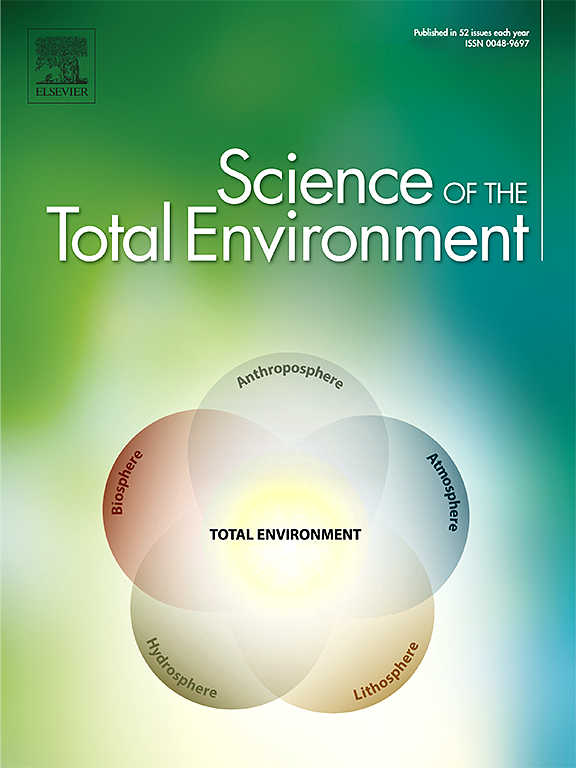Eco-nano solutions for rapid phosphorus recovery: Closing the loop for sustainable agriculture
IF 8.2
1区 环境科学与生态学
Q1 ENVIRONMENTAL SCIENCES
引用次数: 0
Abstract
Efficient phosphorus (P) removal from agricultural drainage is crucial for making its removal and recovery economically viable and operationally feasible. This study evaluated cost-effective, green-synthesized nanoparticles (using grass extract) for rapid and efficient P adsorption. Batch experiments were conducted to assess the effect of pH, P concentration, adsorbent dosage, contact time, and temperature on P adsorption. The nanoparticles removed 20 mg/L of P in 5 min, demonstrating their significant potential for effective adsorption in short retention time. They achieved a maximum adsorption capacity of 77.5 mg g−1, outperforming their chemically synthesized counterparts. Moreover, smaller particles exhibited faster initial adsorption, while larger ones contributed more to overall adsorption over time. Modeling results revealed that rapid initial P adsorption was driven by physisorption, while chemisorption controlled the rate of adsorption in the later stages. After five regeneration cycles, the nanoparticles retained over 50 % of their adsorption capacity, demonstrating strong reusability potential. Further research is needed to optimize these nanoparticles for P removal from dynamic agricultural drainage, offering a cost-effective and sustainable solution for P management.

快速磷回收的生态纳米解决方案:闭合可持续农业的循环。
从农业排水中高效去除磷是使其去除和回收在经济上可行和操作上可行的关键。本研究评估了具有成本效益的绿色合成纳米颗粒(使用草提取物),用于快速有效地吸附磷。通过批量实验考察了pH、P浓度、吸附剂用量、接触时间和温度对P吸附的影响。纳米颗粒在5分钟内去除20 mg/L的磷,表明其在短保留时间内有效吸附的巨大潜力。它们达到了77.5 mg g-1的最大吸附容量,优于化学合成的同类。此外,随着时间的推移,较小的颗粒表现出更快的初始吸附,而较大的颗粒对整体吸附的贡献更大。模拟结果表明,磷的快速初始吸附是由物理吸附驱动的,而化学吸附控制了后期的吸附速率。经过5次再生循环后,纳米颗粒保留了50%以上的吸附容量,显示出很强的可重复使用潜力。需要进一步的研究来优化这些纳米颗粒去除动态农业排水中的磷素,为磷素管理提供一个具有成本效益和可持续的解决方案。
本文章由计算机程序翻译,如有差异,请以英文原文为准。
求助全文
约1分钟内获得全文
求助全文
来源期刊

Science of the Total Environment
环境科学-环境科学
CiteScore
17.60
自引率
10.20%
发文量
8726
审稿时长
2.4 months
期刊介绍:
The Science of the Total Environment is an international journal dedicated to scientific research on the environment and its interaction with humanity. It covers a wide range of disciplines and seeks to publish innovative, hypothesis-driven, and impactful research that explores the entire environment, including the atmosphere, lithosphere, hydrosphere, biosphere, and anthroposphere.
The journal's updated Aims & Scope emphasizes the importance of interdisciplinary environmental research with broad impact. Priority is given to studies that advance fundamental understanding and explore the interconnectedness of multiple environmental spheres. Field studies are preferred, while laboratory experiments must demonstrate significant methodological advancements or mechanistic insights with direct relevance to the environment.
 求助内容:
求助内容: 应助结果提醒方式:
应助结果提醒方式:


